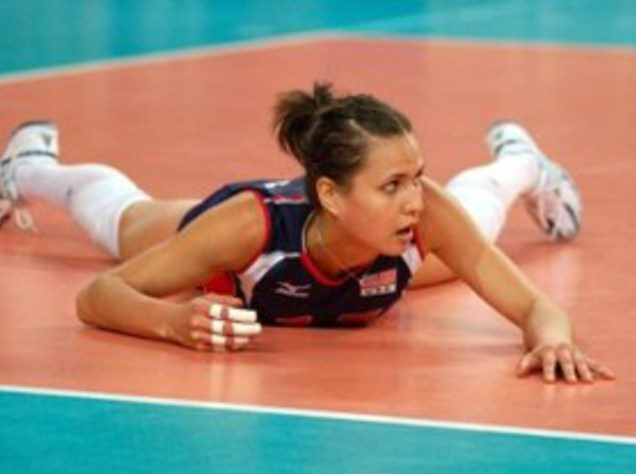All sports come with a prescribed list of injuries to which players tend to fall victim. In volleyball, players’ bodies are constantly jarred by the high impact that results from jumping, landing, and diving. As a sport with one of the highest worldwide participation rates, ranking second only to soccer, volleyball is not exempt from these injury patterns.
It’s important for volleyball players to be conscious of their tendencies towards certain injuries. Knowledge is power and being informed is extremely helpful in taking the necessary measures to minimize injury potential. Additionally, injuries caused by playing surface, repeated motions, and improper technique are more common than acute injuries, so active prevention is crucial.
The most common injuries volleyball players experience involve the knees, ankles, hands, lower back, and shoulders, which is definitely a laundry list of things you must worry about. However, CoachUp is on the scene to help you out! Whether it’s simply prevention or recovery, consider taking our tips with you the next time you’re looking to avoid a painful fate!

Knee Injuries
With such an emphasis placed on the act of jumping explosively and repetitively, the knees are often subject to pain and overuse. When jumping, a large amount of stress is placed on the patellar tendon and players commonly experience pain where the tendon connects to the lower pole of the knee cap. This pain can frequently result from tendinitis, which is often referred to as “jumper’s knee.” Although less common but certainly more serious, ACL tears can occur when cutting side-to-side or awkwardly landing. Thanks to the knee’s potential for serious injury, volleyball players are encouraged to regularly perform stretching and strengthening exercises. Sometimes, even taking a break from jumping activities to avoid overuse is advisable.
Ankle Injuries
Ankle sprains are extremely common and account for about 40% of all volleyball injuries. Sprains are a result of straining or partially tearing the ligaments in the ankle and frequently occur at the net when a player comes down on an opponent’s foot, causing the ankle to turn the wrong way. When dealing with ankle sprains, rehabilitation is critical. Using a balance board or resistance band exercises in your daily routine are both proven to be effective methods, to strength the muscles around the ankle and foot. Adequate rest and rehab are essential to preventing a recurring ankle injury. When returning to play, athletes are encouraged to tape their ankles or wear a brace, which will increase support and decrease the opportunities for re-injury.
Hand Injuries
During blocking and setting moments, the fingers are especially prone to trauma and blunt force. Unfortunately, there isn’t much you can do to avoid these type of injuries because blocking is a necessary evil of volleyball. Common finger injuries include joint sprains, tendon tears, dislocation, and fractures. Athletes who regularly experience finger injuries can tape their joints for extra support.
Lower Back + Shoulder Injuries
The requisite rotational torque for jumping and landing in volleyball can lead to lower back pain. While lower back injuries can be acute, they are more often chronic and can ruin the rest of your career. Straining the lower back is very common, but athletes should also be conscious of the potential for stress fractures along the vertebra that results from repeated hyperextension of the back. Adolescents are especially prone to these injuries because their vertebra are weak and still developing.
Volleyball players are often required to move their shoulders into extreme positions and rotations for overhead serving, blocking, and spiking. Overworking the shoulder joint can result in instability, which the body then tries to counter-balance by labrum and rotator cuff impingement. Players should be aware that rotator cuff pain can be indicative of tendinitis or tears, and that constant excessive movement can lead to a tear. If you’re in any discomfort, err on the side of caution and see a doctor before making matters worse.
To avoid overuse injuries that develop in the shoulders and lower back, athletes should vary their shots during practice. Mixing in a well-placed tip with a hard-driven spike will not only give your shoulder a break, but will add more variety to your game. Lifting weights will target the key muscles in your shoulders and upper back, more fully preparing them for gameplay. Additionally, strengthening core musculature and maintaining hamstring flexibility are both powerful methods of preventing lower back injury and improving athletic performance.
(Related: Read about the outside hitter and attacking positions here.)
Huddle Up
While volleyball has its host of injuries that damage longtime players, athletes can take certain precautions to avoid them. By incorporating stretching, strengthening, and support into every practice and game, players will have a better chance of avoiding injury and maintaining strong, fit bodies during their long volleyball career. If you’ve had injury issues in the past or are currently playing through pain now, we strongly advise seeing a doctor before playing any future.
Be careful, safe, and awesome out there!
Be prepared for the biggest moments by mastering the small ones off the court.
How useful was this post?
Click on a star to rate it!
Average rating 0 / 5. Vote count: 0
No votes so far! Be the first to rate this post.



